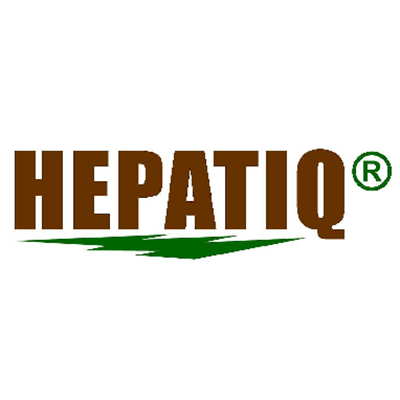
Hepatiq Inc.
HEPATIQ quantifies liver function by analyzing SPECT images. Liver function can be reduced by infections, alcohol and fat buildup. The liver can regenerate new functioning nodules, and blood flow to the liver may increase to get more function from the remaining nodules.
Biopsies, elastography and blood tests estimate liver fibrosis. Patient outcomes are determined by residual liver function, not the extent of fibrosis. This was established in the 8 year, prospective, multi-center, NIH sponsored HALT-C trial. Subsequent research has further confirmed that function outperforms fibrosis in predicting outcomes.
The HEPATIQ report shows six indices: PHM (liver function), fLV (liver volume), fSV (spleen volume), HAI (alcohol activity), eFS (estimated fibrosis) and eEV (estimated varices). These identify those at risk of adverse outcomes such as ascites, variceal bleeding, hepatic encephalopathy, and liver-related death. Differentials of these indices indicate fatty liver, steatohepatitis (alcoholic and non-alcoholic), cirrhosis, portal hypertension, varices and infiltrative spleen disease.
1. DECOMPENSATION: For cirrhotic patients, PHM and fSV indicate likelihood of liver decompensation (ascites, varices, encephalopathy, etc.).
2. PORTAL HYPERTENSION: fSV provides a non-invasive indication of portal hypertension.
3. HEMODYNAMICS: PHM and fLV indicate intrahepatic hemodynamic conditions allowing differentiation of acute and chronic liver disease.
4. ASH v. NASH: HAI and fLV allow differentiation of alcoholic and nonalcoholic steatohepatitis.
5. INTERVENTIONS: For HCC patients being considered for radioembolization or chemotherapy, PHM indicates likelihood of post-intervention liver failure.
6. TRANSPLANTATION: For severely diseased patients with MELD not high enough for transplant priority, low PHM may justify a MELD exception.
7. THERAPY: PHM is an objective assessment of efficacy of pharmacological, radiological or surgical therapies for underlying liver disease causes.

.png)
.png)
.png)
.png)
.png)
.png)
.jpg)
.jpg)
.jpg)